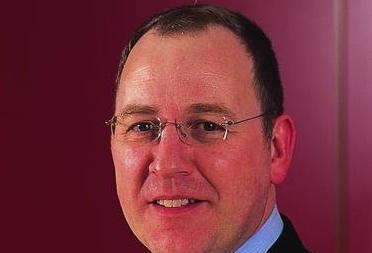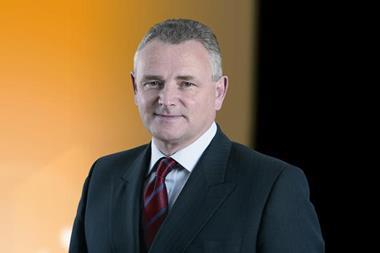RSA’s bold bid for Aviva’s general insurance business took the market by surprise. But with the composite insurer model seemingly in decline in the UK, is Aviva just putting off the inevitable?
The battle lines have been drawn. RSA’s £5bn bid for Aviva’s general insurance business has been one of the most exciting – and pored over – market moves in recent times.
One of RSA’s key strategies is an attack on Aviva’s ‘composite model’ of a combined general insurance and life insurance company, claiming it is no longer viable in today’s market.
The main ammunition in its argument is that no other major primary UK insurer continues to pursue the composite model.
It also holds that, in the wake of the new, stricter regulatory landscape, there will be fewer capital advantages for writing general and life insurance together. This strike follows AXA’s move in June to sell its UK life business to Resolution for £2.8bn.
Aviva has hit back, however. It says that being a composite has created significant synergies for the insurance giant, including reduced operating costs by combining two businesses under a single global brand, together with opportunities for cross-selling and greater efficiencies generated by shared back-office services.
Further, Aviva argues that diversity benefits under Solvency II will still allow it to hold substantially less capital, proportionately speaking, than it would have to if it had one insurance business on a standalone basis.
So who will win the day? Will RSA’s attack force a schism in the old models? Or will the complementary nature of the composite emerge the victor? As the wagers begin, Insurance Times looks at the arguments from both camps.
The case for ...
Supporters of the composite insurer model argue that the two businesses complement each other – especially in a tough climate when one business entity begins to suffer.
“The general insurance operations provide cashflow, which pays the dividend and supports the growth of the life operations, and for that reason the model is very attractive. I wouldn’t say it is not valuable any more,” says KBC Peel Hunt’s financial marketing analyst Mark Williamson.
This cuts both ways. General insurance is more cyclical than life insurance, and supporters hold that the life business provides some much-needed stability when its sister company feels the pressure at the point where the market reaches the bottom of the cycle. In addition, Aviva argues that the capital diversification benefits under Solvency II remain a major plus – allowing the insurer to hold 30%-40% less capital compared to standalone insurers.
Further, part of the crux of the insurer’s argument is that the composite model provides an opportunity for cross-selling and increasing new business.
Sources within Aviva argue that having a single global brand helps maximise the returns on marketing spend for both businesses, pointing to its recent celebrity-studded advertising campaign as an example of the success of this strategy in attracting both sets of customers.
This is a view that has its supporters across the market. Jelf chief executive Alex Alway has said that it would be a shame to lose the synergies Aviva has across its general insurance, life and healthcare businesses. Some are also dubious of the argument that a standalone business performs better.
“The insurer that has done the least well [this year] is RBSI, and as an insurer it is pretty narrowly defined in what if offers. It is primarily a personal lines insurer, so you can’t say that if you focus on one then you will be successful,” KPMG partner Mark Winlow says.
1.27 billion reasons why it works
Aviva group chief executive Andrew Moss has also hit back at RSA’s criticism of its performance: “The progress we’re making in reshaping and transforming Aviva was evident in the 21% increase to £1.27bn of operating profits at our interim results, and we firmly believe this strategy will continue to deliver superior value for our shareholders.”
Moreover, Aviva argues that while it may be the only composite model still standing in the UK, the model remains a norm in Europe. They point out that four of the top 10 European companies – including Allianz, Generali, Zurich and AXA (which continues to operate a life business outside of the UK) – are composites, proving the success of the model.
“People talk about composite model in the UK as if it were quite an unusual thing,” an Aviva spokesman says. “But if you look to Europe, very large, very successful companies are composite insurers. In Europe, it is expected that if you are an insurer, you are a composite insurer. Aviva sees itself as a peer group of those large European insurers.”
The general marketplace view holds that Aviva’s management is under the microscope rather than the model itself, however. “The challenge that RSA chief executive Andy Haste has given is actually that Aviva is not very good at being a composite,” Winlow explains.
“It is less a question about the composite model itself and more about whether Aviva is delivering the value that the model should deliver.”
The case against ...
Detractors of the composite model point out that it has gone progressively out of favour over the past decade, as more focused, specialised businesses find favour with investors. KBC Peel Hunt’s Mark Williamson points out that, since the 1990s, all the major UK composites have consolidated – with most of them swallowed by the Aviva group. “Generally, there has been a move towards specialisation within the insurance market and we have seen new businesses focus on specific areas in particular,” he says.
Collins Stewart analyst Ben Cohen points out that the results of the large European composites have now fallen to an all-time low, in stark contrast to the strong performances of specialist insurance providers Amlin and Admiral. This has further curbed investors’ appetite for the composite model.
Unitas chairman Mark Boucher argues that the model has become outdated. “People should focus on core capabilities, and it is difficult to see what the core capability is within the composite model,” he says. “The difference between GI and life is significant in terms of capital requirements and management, and to some extent route to market as well, and therefore there are limited similarities. One could argue that the composite model isn’t necessarily the right model.”
Flying solo
Further, critics argue that the alleged benefits of the composite model don’t hold up to close scrutiny. They are dismissive of the benefits of reduced capital requirements, arguing that in the new era of tighter regulations, a business entity needs to be able to stand alone unsupported by another. Analysts are also sceptical about the benefits of cross-selling. “That has not really been proven. I haven’t seen that work anywhere,” Winlow says.
In addition, they contend that trying to yoke two different businesses together under one brand can create both cultural and managerial problems. “The problem ultimately with all of these businesses is they are people businesses and, with regard to the underwriting side, it is difficult to actually mould the cultures together,” Williamson says.
He adds that while Aviva may stand firm against RSA’s onslaught, a bounce-back for the composite model seems unlikely. “I don’t think we are going to see a renaissance in the composite model. In the case of Aviva, I think there is a great deal of logic in combining life and non-life insurance because of the cashflow dynamics of the different businesses, but I don’t see any reason that suddenly we are going to see huge insurance groups spring up,” he says.
“I think it will remain very much as it is, and we will continue to see specialist underwriting businesses in both general insurance and life insurance.”
Aviva’s leaders have the chance to prove the model’s naysayers wrong, and align the insurer with its European equivalents in flying the flag for the composite. But their response must be strong and compelling – otherwise RSA’s argument may convince the people with the power to derail those plans: Aviva’s shareholders. IT
Hosted by comedian and actor Tom Allen, 34 Gold, 23 Silver and 22 Bronze awards were handed out across an amazing 34 categories recognising brilliance and innovation right across the breadth of UK general insurance.














































No comments yet